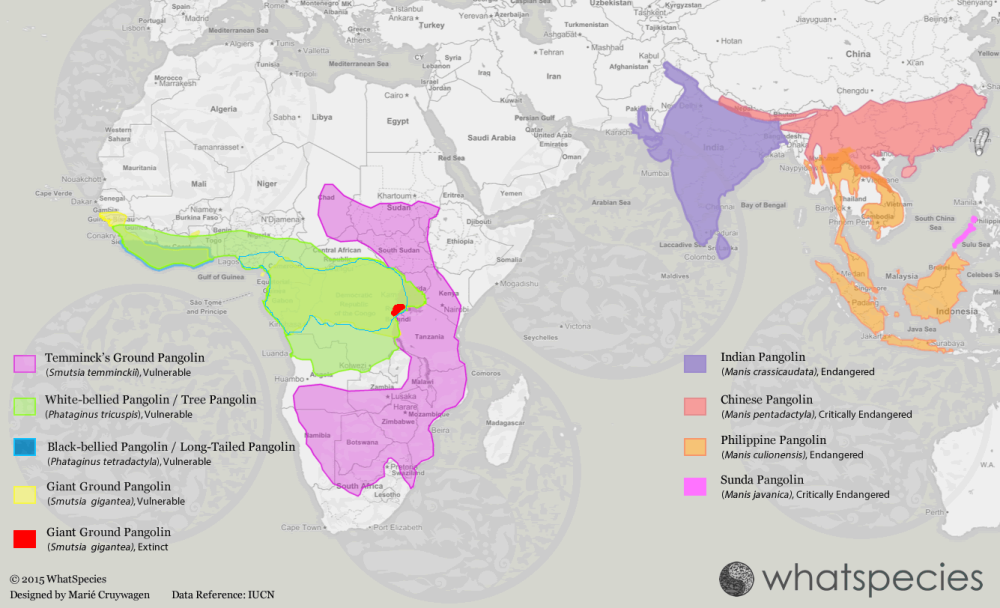What is a pangolin?
Photo Credit: Associated Press.
http://www.telegraph.co.uk/science/2016/03/15/pangolins-13-facts-about-the-worlds-most-hunted-animal/
A pangolin (often called scaly anteaters) is a mammal which is covered with tough scales which are made from the same thing as your fingernails and toenails. Pangolins weigh anywhere from 3 pounds to 75 pounds. This is because there are 8 different species of pangolin which live throughout Africa and Asia. Many of these species are critically endangered. Although Pangolins share many characteristics with anteaters and armadillos, they are actually more closely related to cats, dogs, and bears.
 |
| Pangolin Range (whatspecies.com) |
Predator/Prey
A pangolin eats insects like ants, but they also eat worms as well. Scientists estimate that a pangolin can at as many as 70 MILLION insects every year. Pangolins also have special muscles in their mouths which protect against attacking insects. Hyenas, leopards, and humans are the main predators of the pangolin.
Threats
Pangolins are in severe danger, for one is poached every 5 minutes. Even though international trade is prohibited, pangolin skin is prized in many countries around the world. That is why they are the most poached mammal in the world. One of the reasons for this is because conservationists have a lack of data for where pangolins come from, and where they end up. Ending the illegal trade of the pangolin is crucial to protect this animal from extinction.
Another of the threats the pangolin face is deforestation. As trees are rapidly being cut down, pangolins are being forced to live in smaller and smaller spaces. However, you can help save the pangolin.
Another of the threats the pangolin face is deforestation. As trees are rapidly being cut down, pangolins are being forced to live in smaller and smaller spaces. However, you can help save the pangolin.
| A pangolin skin hung at a market alongside other endangered species (Photo Credit: Rich Garella) |
How can you help?
Many people don't know about the pangolin, so right now we need to INFORM the public about this endangered animal. Tell your friends about this species, and reshare this post on Facebook, Twitter, Instagram, Pinterest, or any other social media platform. Write emails to political leaders telling them about this animal too! Finally, you can play the Google Doodle on saving the pangolins! It is accessible here.Works Cited
http://www.awf.org/wildlife-conservation/pangolin
http://savepangolins.org
http://www.pangolinsg.org/

